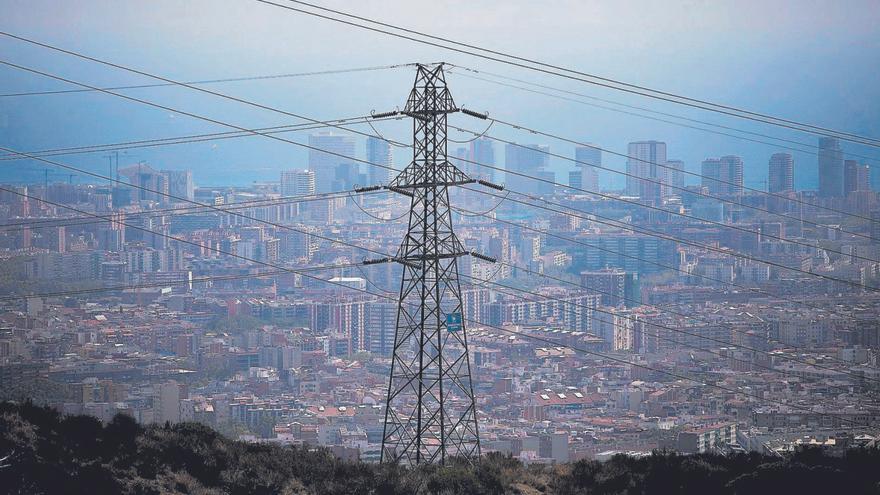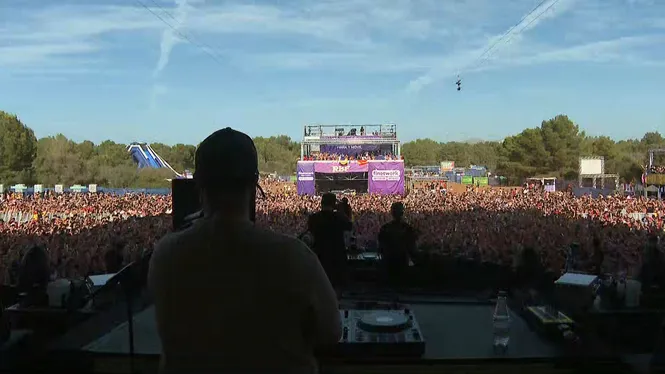Spain aims to more than double its renewable energy capacity in the coming years, while electricity consumption is falling to levels seen two decades ago. An imbalance that the National Commission for Markets and Competition (CNMC) wants to resolve by encouraging the construction of new high-voltage networks outside the scope of government planning, to encourage “demand growth” and boost decarbonization targets, as proposed in a public consultation on the new methodology for the remuneration ratio for transmission lines.
Electricity distributors, such as Iberdrola, Naturgy, Endesa and EDP, are responsible for bringing electricity from the substation to homes and businesses, through medium or low voltage power lines; but between these substations and the power plants, electricity is transported via the transmission network or the high voltage network, the sole owner of which is Red Electrica, under a monopoly system. To deploy some networks, other networks are needed, but the high voltage depends directly on the Ministry of Ecological Transition and Demographic Challenge, which decides which new lines will be built and expresses this in a document with six-year plans.
The Executive prepares this list because electricity networks are financed through the electricity bill paid by consumers and to avoid wasting money. The last electricity planning for the period 2021-2026 was approved in 2020, although it was modified this year to include new measures, in light of the demand of the large industries that will be established in Spain, as part of the recovery plan. However, many companies complain that they are excluded from this document, even though there are those who want to increase electricity consumption because they want to reduce their emissions by switching from gas to electricity, for example.
In these cases — companies that want to decarbonize and are not in current planning — the CNMC proposes that power companies could step up the construction of the necessary network. If this proposal goes ahead, it will be necessary to regulate many aspects related to it, such as the ownership of these networks, their financing, the transmission model and who is responsible for maintaining this infrastructure, according to CNMC sources.
Private initiative
The autonomous body’s approach is in line with the words spoken by Iberdrola CEO Mario Ruiz-Tagle during the first Mediterranean Economic and Social Forum, organised by Prensa Ibérica, in which he suggested that private initiative could invest in high-voltage networks once, through public concessions for 30 years, and which was responded to the following day with a fierce defence of the current model by Red Electrica.
The institution headed by Cani Fernández is responsible for designing the formula for calculating the remuneration received by the semi-public operator (Red Eléctrica has 20% state ownership) of the transport networks and has conducted a consultation for the new regulatory period (2026-2031) that aspires to be the basis for the proposed modification.
The main problem stems from “the need to increase the rate of electrification of demand in the face of the negative development recorded in recent years,” according to the text of the consultation. Since the beginning of the year, electricity demand has grown by only 0.6% (120,055 GWh) compared to the same period in 2023, when electricity consumption fell to levels two decades ago, according to data from Red Electrica. Added to this is “the need to increase access to the grid” to connect new generation, storage and demand facilities and thus achieve decarbonization targets.
Related News
“The approach proposed by other countries could be analysed and some unplanned infrastructure could be financed by the promoters themselves in cases of capacity shortage, as long as it contributes to decarbonisation objectives,” explains the consultation, which will receive submissions until September 15.
For example, the “super-regulator” – which is in the process of being split, to separate the energy regulator from the current institution – recalls the Portuguese case, where if there is not enough capacity in the network, it is allowed to access the agreements concluded between the parties concerned and the transmission network operator, and the operator may bear the financial costs of creating or strengthening the network necessary to integrate the production of the party concerned.

“Infuriatingly humble social media buff. Twitter advocate. Writer. Internet nerd.”









